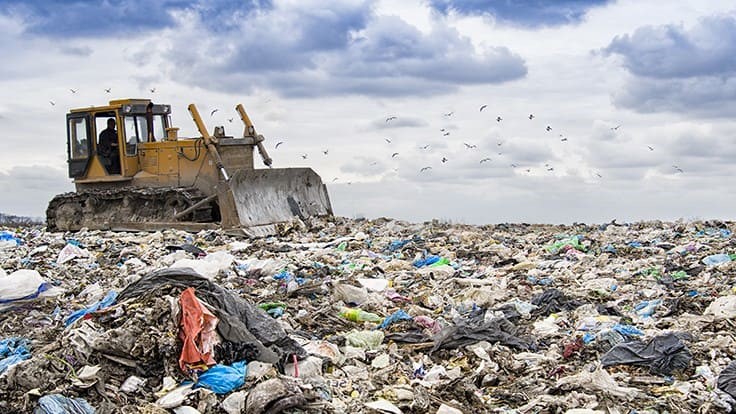The Transport of Waste to Landfills in Florida
Transportation of waste to landfills in Florida is an integral part of this sates’s waste management system that collects, transports, and disposes of waste in a safe and environmentally friendly way.
There are now more than 150 active landfills in Florida, and the logistics of transporting municipal solid waste (MSW), construction debris, hazardous materials and other categories of waste are complex and critical to ensuring public health and environmental integrity.
System for Transport of Waste
Waste transportation starts from the source, which can be homes, businesses or industrial areas, to the disposal facilities, such as landfills, recycling centers, or treatment plants. The process involves dumpster rentals sometimes:
- Collection: Waste is collected via curbside services, dumpsters or collection points
- Transfer Stations: Most of the time, the waste is brought to transfer stations, where it is compacted and the larger vehicle takes them for long-distance travel
- Transport to Landfills: The compacted waste is subsequently transported to landfills via leak- or spill-proof vehicles, frequently across long distances
This system is operated by a mix of dumpster rental private companies, local municipalities and regional waste management agencies.
Modes of Waste Transport
A range of approaches can be used to transport waste to landfills depending on how far away those landfills are, how much waste is being disposed of, and what sorts of waste are being disposed of:
- Dumpster Trucks. The most popular method, trucks are used for local receivable and long-haul shipping
- Garbage Trucks: For collecting residential trash
- Roll-off Trucks: For transporting dumpsters and large containers
- Semi-Trucks & Trailers: For transferring the transported material from transfer stations to landfills in bulk
- Landfill: In places where landfills are well outside of town, refuse is sent on the rail to large dumps that can handle great volumes of garbage. For longer distances, rail transport is lower-priced and more ecologically green
- Barge: In coastal cities like Melbourne, waste is transported by barge to regional landfills, reducing vehicle congestion on roads and cutting greenhouse gas emissions
There are various factors affecting waste transport to landfills:
Environmental Compliance
There are federal regulations that govern the safe transport of waste, including the Resource Conservation and Recovery Act (RCRA). Vehicles that transport that type of waste must meet stringent standards for containment and labeling to prevent spills or exposure.
Cost and Efficiency
Transportation costs are also heavily influenced by fuel, vehicle maintenance and labor costs. For long-distance hauling, transfer stations play a role in optimizing efficiency by minimizing the number of trips to and from the landfill.
Waste Volume
Population growth and urbanization have increased the volume of waste, driving demand for larger, more efficient transport systems, with MSW per year of about 192.4 million tons, according to the EPA.
Distance to Landfills
Urban centres often suffer from the factor of landfill proximity, leading to waste being transported significant distances to rural or regional facilities.
Safety Protocols
Vehicles used for transporting the waste should be properly secured, leak-proof and should not spill or scatter waste during transportation. Drivers are trained for emergencies like an accident or hazardous material exposure.
Challenges in Waste Transport
Environmental Impact
Waste transport vehicles also add to green house gas emissions, especially in regions that use trucks for long-distance transport. Mistreatment of transport can lead to spillage of waste contaminating roadways and waterways.
Infrastructure Strain
Municipalities like Melbourne have congestion in urban areas, which delays and increases the cost of waste transport. In some places, limited access to rail or barges creates even greater reliance on trucks, putting additional stress on infrastructure.
Rising Costs
Transporting waste also puts serious strain on the pocket; fuel price volatility, compliance costs and the like only serve to detract from profitability. Specific requisitions for vehicles including for landfill sites, including for hazardous waste, tend to drive up operational costs.
Landfill Accessibility
Because many landfills are approaching capacity, waste often has to travel much farther to be disposed of, which drives up costs and environmental concerns.
New Developments Regarding Waste Transport
The waste transport sector has welcomed innovation to help tackle these problems, in the form of efficiency and sustainable solutions:
- CNG (Compressed Natural Gas) Trucks
- CNG-powered vehicles produce fewer emissions and are more fuel-efficient than diesel trucks, leading many waste transport fleets to convert their fleets
- Smart Routing Systems: a GPS and route optimization software can help the driver take a route that is the best in terms of fuel consumption and the time taken to travel, making it cost-effective and less polluting
Integrated Transport Systems
Transportation of waste is made more efficient over long distances by incorporating multiple modes such as truck, rail and barge.
Regional Waste Management
Municipalities of Florida partner with private companies like dumpster rental companies to build regional transfer stations and landfills, which cut the distance and cost of hauling trash.
Advantages of Efficient Waste Transport
Public Health and Safety
When this waste is transported correctly, the chance of exposure is reduced, therefore limiting the possibility of health repercussions to neighbouring communities.
Environmental Protection
There are no leaks of waste in secure transport systems, keeping soil and water safe from contamination.
Operational Efficiency
By streamlining the transport process, it costs less for the municipalities and private companies which ultimately saves taxpayers and customers money.
Truck transport of waste to USA landfills is a complex but necessary component of the nation’s waste management infrastructure.
Through the use of sophisticated technologies, efficient routing, dumpster rentals and commitment to sustainability, the industry is constantly adapting to a world of expanding populations and environmental challenges. With proper attention and investment, waste transport systems can provide safe, effective and responsible disposal for decades into the future.


